Verbesina virginica
(Frostweed)
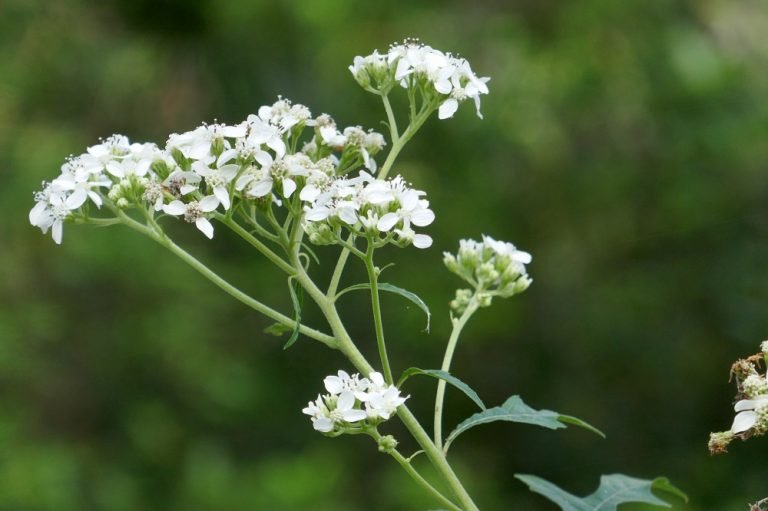
Common Names, Latin Name, and Family
Common names include white crownbeard, iceplant, iceweed, Virginia crownbeard, Indian tobacco, richweed, squawweed, and winged stem.
Its Latin name Verbesina virginica.
It is in the Asteraceae, or aster, family.
Form
Frostweed (Verbesina virginica) is a perennial wildflower that grows to a height of 4 – 6 feet.
In the northern part of its range …
“When winter weather brings ice, the stems exude water that freezes into fascinating shapes, hence its common name frostweed.” [1]
Leaves
The leaves are alternate, and stalked with the leaf base growing on the stem.
They range in shape from ovate to lanceolate with the smaller, upper leaves, having simple leaf margins and the larger, lower leaves, being lobed.
The surfaces usually have stiff, gray, hairs making them rough to the touch.
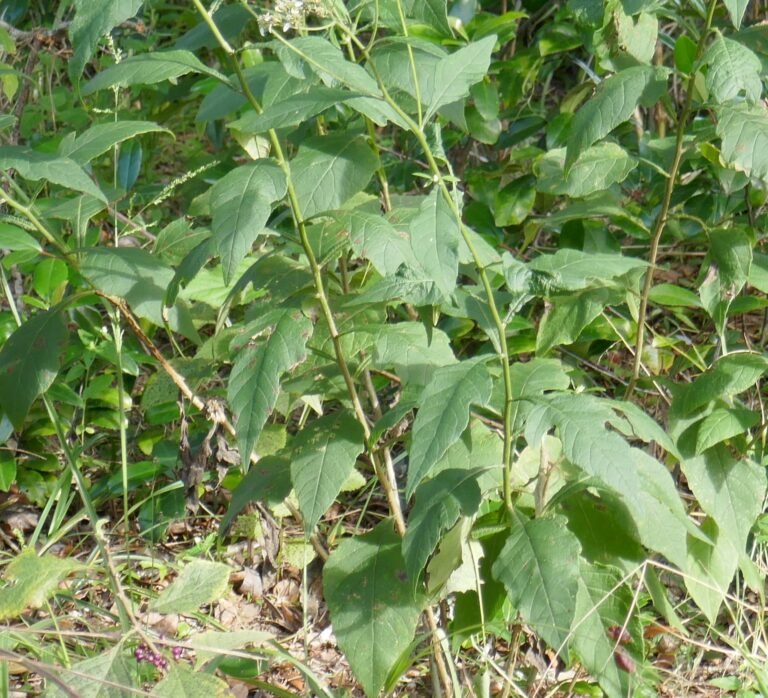
Flowers
The white flowers appear in mounded clusters or corymbs.
Frostweed generally blooms in the summer and fall, but early plants may start blooming in late spring.
The flowering season can be extended by several weeks if the spent blooms are removed, or deadheaded.
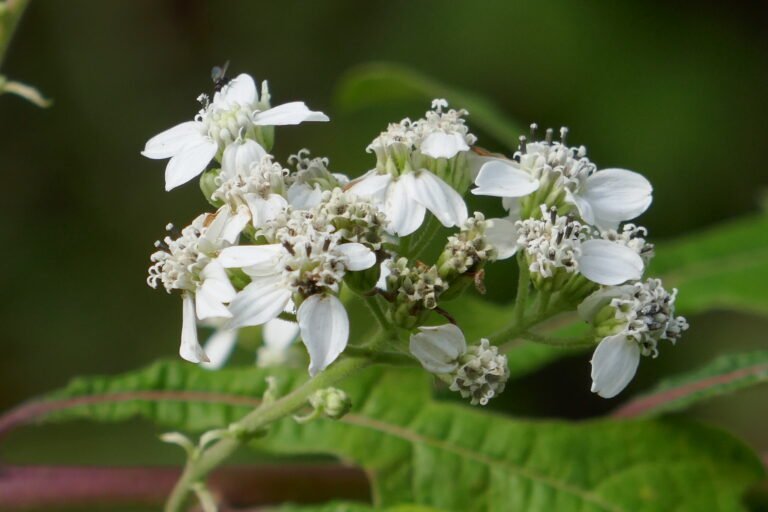
Fruit / Seeds
The seeds are dark in the center and have a winged flange around the outside. The papery winged portion does not need to be removed to store or germinate the seeds.
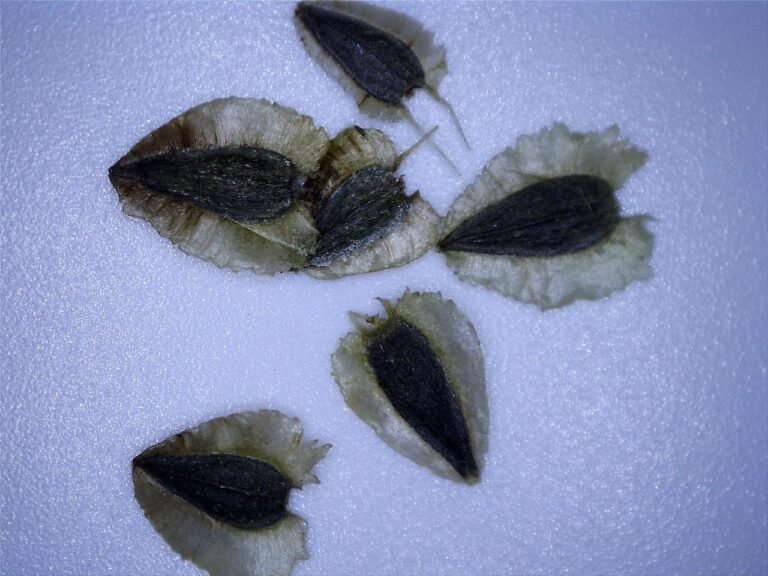
Habitat
Frostweed occurs naturally in inland hammocks, coastal hammocks, stream banks, riparian areas, thickets, and disturbed sites.
Native Range
In Florida it is found naturally occurring in almost every county with the exception of a few northern counties and several in the panhandle.
Frostweed is native to the following states: AL, AR, DC, FL, GA, IA, IL, IN, KS, KY, LA, MD, MO, MS, NC, OH, OK, PA, SC, TN, TX, VA, and WV.
It grows in zones 6a to 10a.
Landscape Use
In the home landscape it grows in filtered sunlight with dry to occasionally moist soils.
It tends to reach for the sun and will fall over if not staked. Using tomato cages can be an effective solution to individual stakes.
It can be planted in beds with shorter plants underneath and around it.
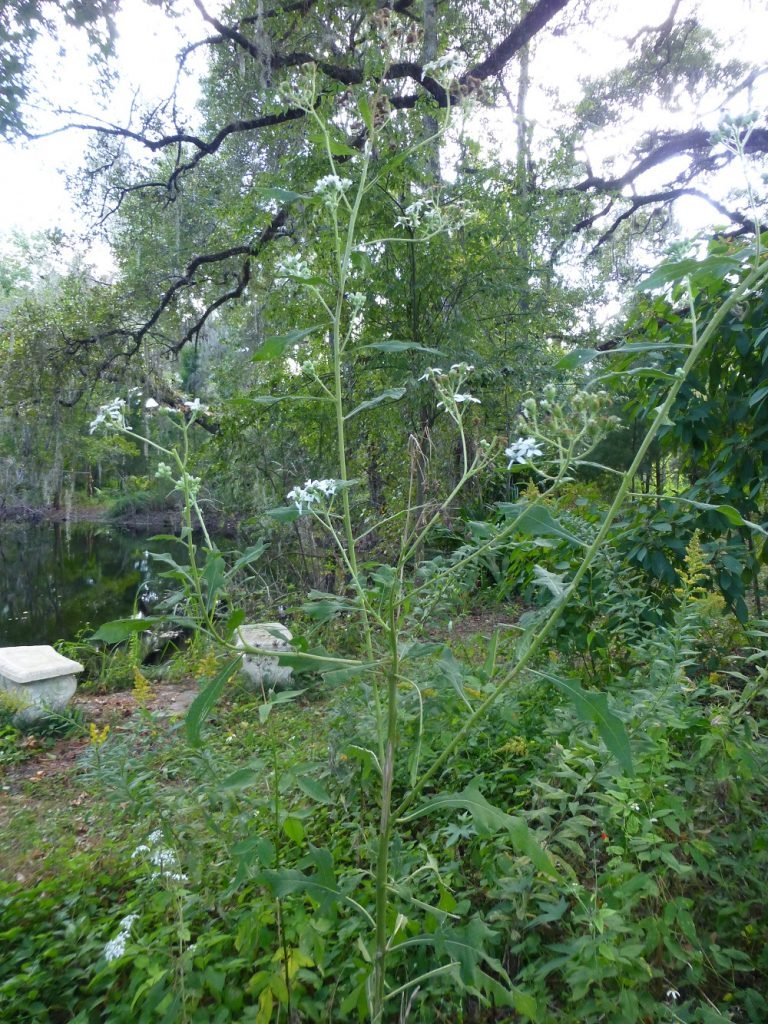
Wildlife Use
Many pollinators visit frostweed because of its convenient, and large, corymb shaped, platform of blooms. Since the bloom structure provides a sound landing area larger butterflies find it easy to nectar on without a lot of fluttering and wasted energy.
Pollinators such as bumblebees, honey bees, wasps, flies, mosquitoes, butterflies, and beetles, visit frostweed flowers for the nectar.
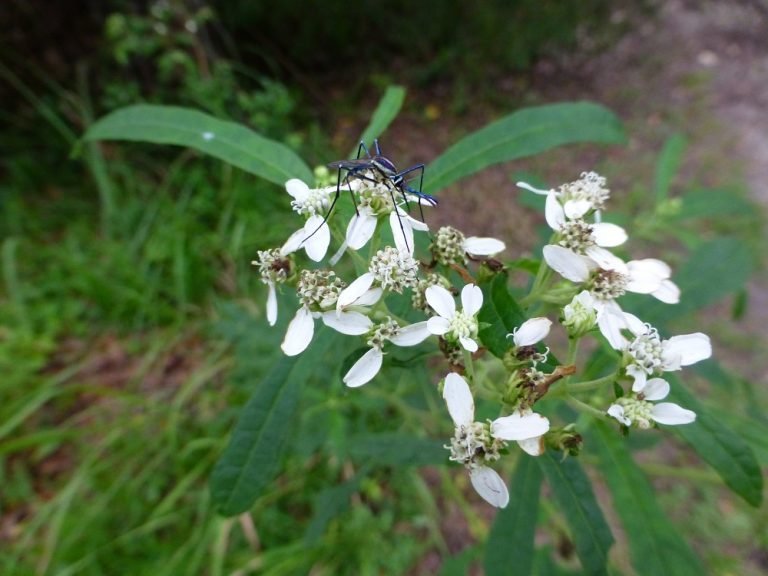
Propagation
Propagation is achieved by the germination of seeds, transplants, and dividing the roots.
You can purchase Florida ecotype frostweed seeds from me here at my Ebay Store.
